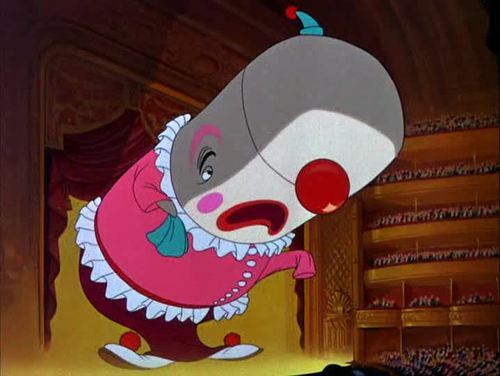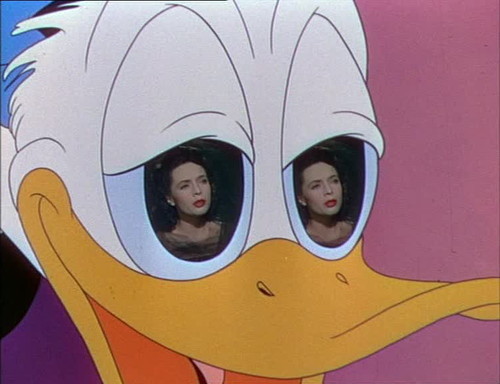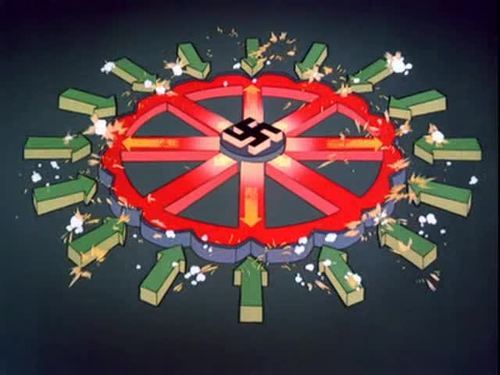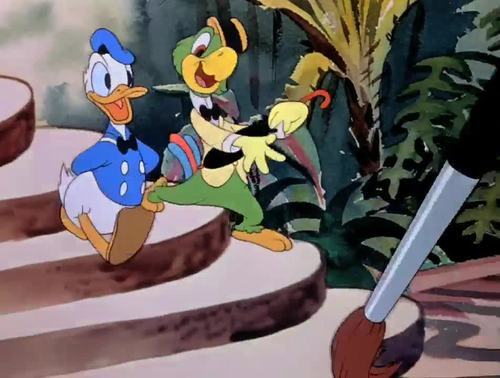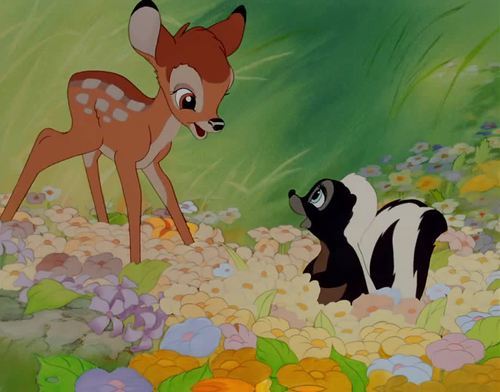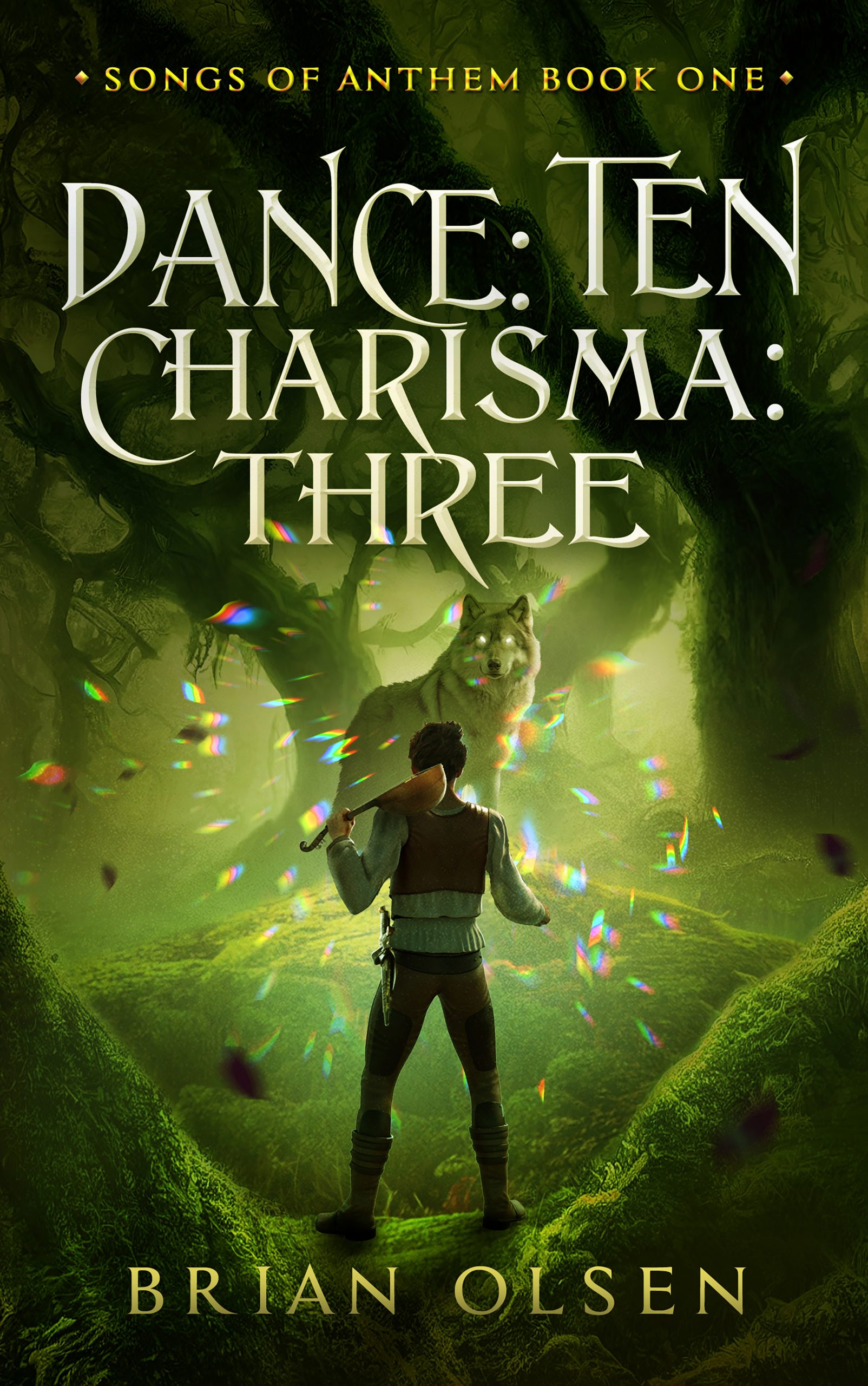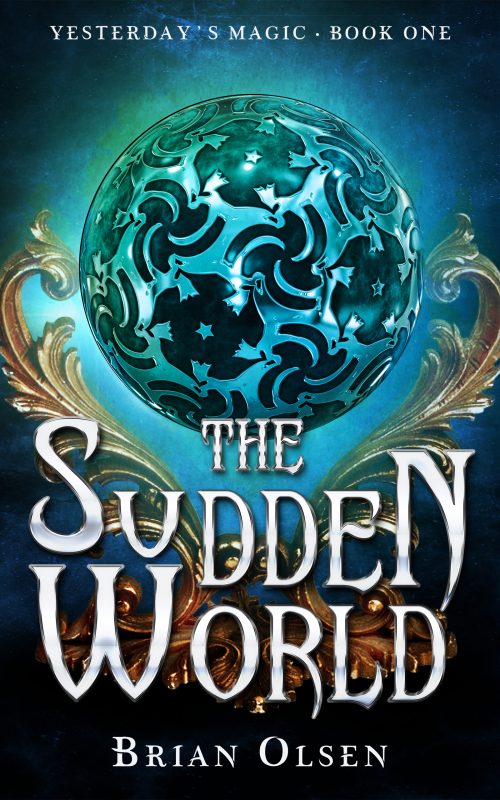I had never heard of Make Mine Music (1946) before beginning this project. It’s another package film made on the cheap while the Disney studio was struggling in the aftermath of World War II. It’s sort of a low-rent Fantasia – a collection of unrelated vignettes set to jazz music. And wouldn’t you know it, there just happen to be ten such vignettes. How convenient!
- The Martins and the Coys is technically the first short of the film, but it’s the one I watched last. After I finished the movie, I looked it up online and discovered that the copy I had viewed was missing this segment. Turns out, it was edited out of all of the home video releases in America because of concerns about excessive violence. Well! How can I hear that and not dig up a copy? I was only able to find a terrible quality Italian-dubbed version of it on YouTube, but I suffered through it because I care, readers, I care. A few seconds in I paused to go and read the lyrics in English because I had no idea what the hell was going on, but then I muddled through to the end. The cartoon is a twist on the Hatfield/McCoy feud. All of the Martins and Coys look exactly alike, which I would say suggests inbreeding except there isn’t a single woman among them, so I’m thinking cloning. Well, not a single woman except for one of our two stars. The families wipe each other out except for one young and hot representative from each side, a young man and a young woman (I don’t know which comes from which family because it was in Italian). They fall in love, get married, the ghosts of their dead relatives freak out, and then the newlyweds beat the ever-loving shit out of each other. The end. I don’t know if I would have edited it out for the violence so much as for the scene where a chicken is pecking food out of a sleeping Coy’s beard. It was seriously gross.
- Blue Bayou is next (or first, if you’re not as obsessive a completist as me). It pretty much does what it says on the tin – there’s a bayou, and it’s blue. A bird flies around. It’s sort of pretty. Nothing really happens. The music’s real slow, and I’m falling asleep five minutes into this movie.
- All the Cats Join In and I am jolted awake. Benny Goodman and his Orchestra play a jumping jam to accompany some cartoon teens getting together to swing, baby, swing. It’s awesome. We see the pencil drawing the scene and there are a lot of clever bits made from this conceit. A car full of kids zooms away too fast for the pencil to finish drawing it, so it has to catch up to the car at a stoplight. A boy teen yawns when a girl teen with a big butt is interested in him, so the pencil erases the weight off and he’s…wait, that’s not clever, it’s a painfully offensive relic of its time. Never mind. Hey, a naked girl! Very racy for a Disney flick – this was back when Walt was still trying to be all grown-up about things. I thought it was pretty sexy while I was watching it, with the girl in the shower and getting dressed and all, and then I learned there were bare boobies in the original version, which were also edited out for home video. Human boobies – bad. Centaur boobies – A-OK!
- Without You brings me back to Slumberland. It’s a lovely song but nothing’s happening on the screen – just scenery changing. At least when Fantasia was dull, it was pretty. Even the animation in this segment seems bored.
- I’m guessing you’ve probably heard of Casey at the Bat. This is a gag-filled “musical recitation” by Jerry Colonna of the famous poem. I won’t go through it joke by joke (even though having visual jokes described to you is hysterical) but the last bit with Casey in the rain in the empty park, repeatedly throwing balls to himself, swinging and missing, crying uncontrollably, is bleakly hilarious.
- Oh, hey, Dinah Shore sings this next one, Two Silhouettes! I remember her from a talk show and…lesbian golf or something? Anyways. It’s two shadowed ballet dancers prancing in front of an animated background. The dancers are real, they’re completely silhouetted, and it looks pretty cool. I found myself wondering if they were wrapped head-to-toe in green-screen material, which might explain why, considering they are dancing a ballet, they don’t actually move around all that much.
- Peter and the Wolf is up next, an animated acting-out of Prokofiev’s tune. The opening – with the narrator, Sterling Holloway, explaining how each instrument represents a character – is very Fantasia. The cartoon is silly fun, but I have some issues. The wolf is drawn in a very Satanic manner and it is constantly drooling. The animators are clearly trying to influence us to root against this noble beast. The good cat tries to eat the good bird and we’re all supposed to forgive and forget, but the wolf just tries to defend himself – Peter and his menagerie come hunting for him, remember – and somehow he’s the bad guy? Prejudice! Wrote a song about! Like to hear it? Hear it go. Also, the wolf clearly eats Sonia the duck – we actually see her ghost go to Heaven – but then the filmmakers wimp out and make it so she’s alive at the end. The Martins and the Coys shooting each other to death was fine, but a wolf eating a duck is a step too far? America has weird values.
- After You’re Gone has Benny Goodman back again as each member of the Goodman Octet is represented by an animated instrument going wild. It’s non-realistic and incredibly fun and somewhat nonsensical – I particularly liked the fingers in tutus dancing on the keyboard – and it’s over way too soon.
- Johnnie Fedora and Alice Bluebonnet is about two hats that are in love. There’s not much more I can say about it, except excessive time spent on Tumblr led me to expect the fedora to say “M’lady” a lot while wearing a trenchcoat and holding a My Little Pony.
- I almost jumped off my sofa in excitement when I realized the final installment was The Whale Who Wanted to Sing at the Met. I had the book and record set of this as a kid – those of you of a certain age may remember these, you turned the page when you heard the bell. I loved the damn thing, but it had been so long that I had forgotten the entire story. I always thought it was a stand-alone Disney short, I had no idea it was a part of a feature. So I was pretty excited to see the actual cartoon for the first time, and I wasn’t disappointed. Seriously, get this DVD just for this short (I’d say watch it on YouTube but I can’t find it). It’s about an opera-singing whale named Willie who dreams of being discovered. Nelson Eddy does all the voices and he’s superb. There is an extended dream sequence of Willie singing opera’s most famous roles at the Met – him immense, his co-stars normal sized – and it’s perfection. He’s Pagliacci with a HUGE red nose and a tiny, tiny hat. It’s just…see it. Make Mine Music has a lot of really great ups and a few really boring downs, but this final segment makes the whole film.
